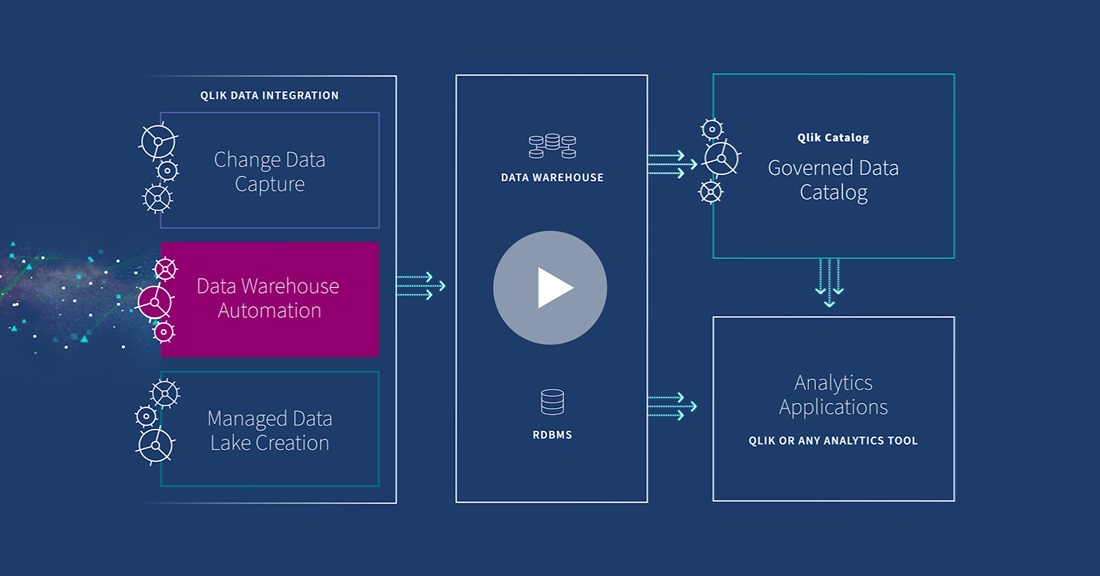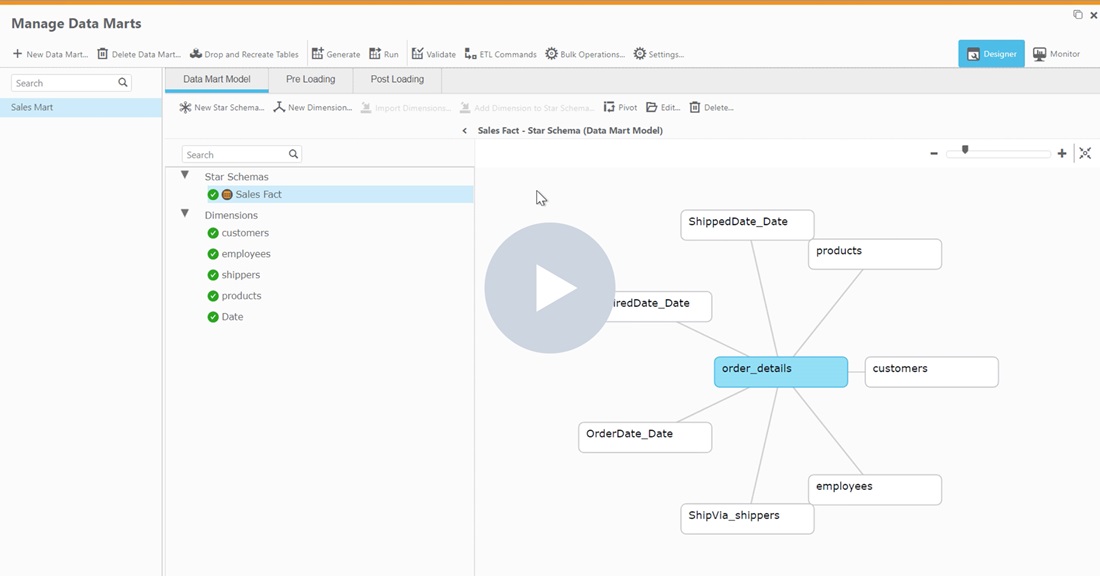Qlik Compose® for Data Warehouses
Agile data warehouse automation
2023 Gartner® Magic Quadrant™ for Data Integration Tools
Speed time to analytics
Traditional methods of building and managing data warehouses are straining to keep pace with business demands. The multi-month, error-prone ETL development effort to set up a data warehouse – typically 60-80% of prep time – often means that the data model is out-of-date before the BI project even starts. Modifying these brittle data warehouses causes more delays, ties up skilled resources and delays project ROI.
To speed time to analytics, the data warehouse creation and management lifecycle must be streamlined wherever possible.
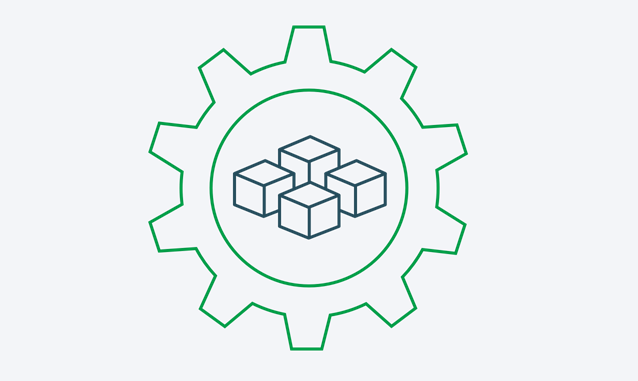
Modern approach for data warehousing
Qlik Compose for Data Warehouses provides a modern approach by automating and optimizing data warehouse creation and operation. Qlik Compose automates designing the warehouse, generating ETL code, and quickly applying updates, all whilst leveraging best practices and proven design patterns. Qlik Compose for Data Warehouses dramatically reduces the time, cost and risk of BI projects, whether on-premises or in the cloud.
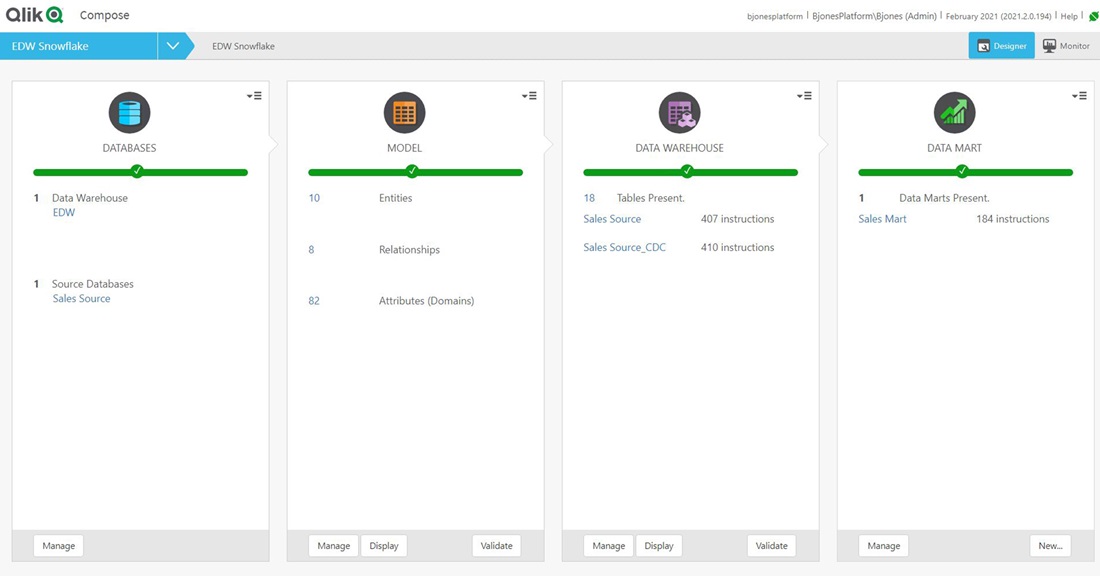
Agile data warehouse automation
Dramatically reduce the time, costs, and risks of data warehousing projects
- Quickly design, create, load and update data warehouses
- Automatically generate ETL to reduce time, costs and risks
- Implement best practices and templates for more effective BI projects
- Reduce dependence on highly technical development resources
- Automatically generate end-to-end workflows from data ingest to report generation
Intuitive and guided workflows
Qlik Compose for Data Warehouses helps IT teams:
- Load and sync data from sources with ease. Source feeds are loaded in real time with change data capture (CDC).
- Automate data model design and source mapping. Data models can be created or imported, then modified and enhanced iteratively.
- Streamline data warehouse and ETL generation. ETL code is auto-generated to populate and load data warehouses.
- Deploy data marts without manual coding. Data mart types are selected from a broad array of options including transactional, aggregated, or state-oriented.
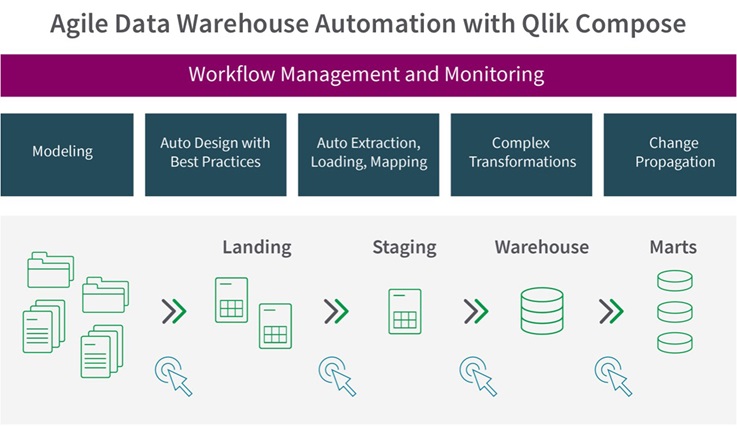
Optimize the data warehousing process
Key operational capabilities include:
- Workflow Designer and Scheduler: Run all data warehouse and data mart ETL tasks as a single, end-to-end process. Schedule the execution of workflows to align with business and IT processes.
- Lineage and Impact Analysis: Automatically create metadata during design phases or implementation. Re-generate data lineage when changes are implemented.
- Monitoring and Notification: Monitor the status of all automatically generated tasks and workflows. Send proactive status alerts.
- Data Profiling: Validate data before it is loaded by identifying and repairing format issues and discrepancies.
- Data Quality: Configure and enforce pre-loading rules to automatically discover and remediate issues with values, formats, data ranges, and duplication while also implementing exception policies.
DataOps for Analytics
Modern data integration delivers real-time, analytics-ready and actionable data to any analytics environment, from Qlik to Tableau, Power BI and beyond.
-

Real-Time Data Streaming (CDC)
Extend enterprise data into live streams to enable modern analytics and microservices with a simple, real-time and universal solution. -

Agile Data Warehouse Automation
Quickly design, build, deploy and manage purpose-built cloud data warehouses without manual coding. -

Managed Data Lake Creation
Automate complex ingestion and transformation processes to provide continuously updated and analytics-ready data lakes.

